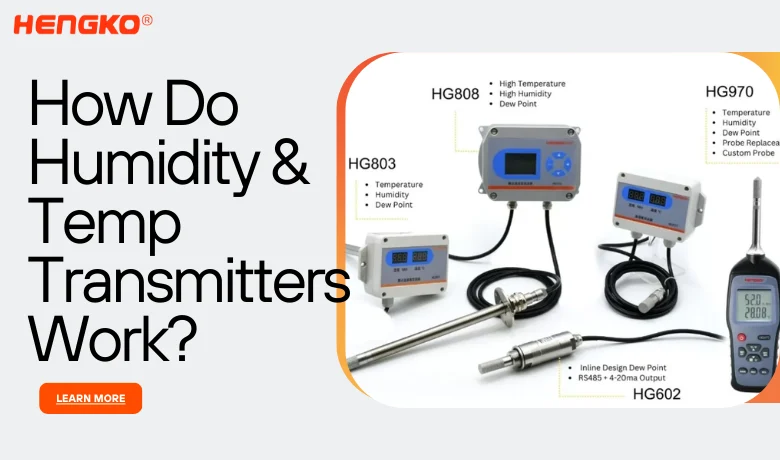多くの産業用途で、窒素ガスは重要な役割を果たしています。しかし、窒素は常に完全に乾燥しているわけではありません。そこで登場するのが露点です。窒素ガスの露点を監視することは、プロセスの品質を保証し、機器を保護するために不可欠です。その理由は以下の通りです:
乾燥窒素の重要性: 窒素は不活性で、他の物質と反応しにくいため、多くの産業で利用されています。そのため、酸素をパージし、腐食を防ぎ、材料の完全性を維持するのに理想的です。しかし、湿気はこれらの利点に一石を投じる。
水分の影響 湿気が入ると問題が発生する。パイプや機器内に結露が発生し、錆びや凍結、さらには閉塞につながることもある。例えば食品包装では、湿気は細菌の繁殖を促進し、腐敗を引き起こす可能性がある。同様に、電子機器製造では、湿気がデリケートな部品にダメージを与える可能性がある。
露点の監視: 露点とは、気体中の水蒸気が凝縮して液体になる温度のことです。窒素の露点を監視することで、産業界はガスが十分に乾燥した状態を維持し、こうした問題を防ぐことができます。露点を定期的にモニタリングすることで、ドライヤーの採用やろ過システムの調整など、窒素供給の乾燥度を望ましいレベルに維持するためのタイムリーな介入が可能になります。
結論として、窒素露点に注視することは、さまざまな業界において重要な慣行である。そうすることで、企業は設備を保護し、製品の品質を維持し、最終的には円滑で効率的な操業を確保することができる。
窒素の露点とは?
窒素の露点を知ることは、工業用途に不可欠です。以下はその内訳である:
露点の定義: 露点とは、気体中の水蒸気が凝縮して液体の水になる温度を指す。気体が水分で飽和状態になる「転換点」と考えればよい。
窒素と露点: 窒素ガス自体は水分を含んでいなくても、水蒸気として水分を保持することができる。ガスが冷えれば冷えるほど、保持できる水蒸気は少なくなる。温度が露点まで下がると、水蒸気は凝縮して小さな水滴になる。
産業界における重要性 工業環境では、窒素は不活性な性質(他の物質と反応しない)を持つため、しばしば使用される。しかし、窒素に水分が多く含まれると、重大な問題を引き起こす可能性があります。露点が重要な理由はここにある:
結露の問題: 配管や機器内で窒素が露点以下に冷却されると、水蒸気が凝縮する。この凝縮は、錆や部品の凍結、さらにはパイプラインの閉塞につながる可能性がある。
製品の品質問題: 食品包装のような用途では、窒素中の過剰な水分が細菌の増殖や腐敗を促進する可能性がある。同様に、電子機器製造では、凝縮した水分が繊細な電子部品にダメージを与える可能性がある。
プロセスで使用される窒素の露点を知ることで、産業界はガスが十分に乾燥した状態を保ち、こうした問題を防ぐことができる。

窒素はどれだけの水分を保持できるか?
予想に反して、窒素ガス自体は従来の意味での「水分を保持」することはない。その理由はこうだ:
化学的結合はない: 窒素分子(N₂)は無極性、つまり電子を平等に共有している。そのため、水分子(H₂O)と強い化学結合を形成しにくい。水蒸気を吸収するいくつかの物質とは異なり、窒素は積極的に水分を引き寄せたり保持したりしない。
空間を共有する: 窒素ガスは水分を保持する代わりに、利用可能な空間を水蒸気と共有するだけである。窒素が「収容」できる水分の量は、いくつかの要因に左右される:
温度だ: 暖かい空気は冷たい空気よりも多くの水蒸気を保持できる。窒素ガスは冷えると水蒸気を保持する能力が低下する。これが露点が非常に重要な概念である理由です。露点は、現在の水分量が気体が水蒸気として保持するには多すぎる温度になり、結露に至ることを意味します。
プレッシャーだ: 圧力が高いほど、水蒸気を含むあらゆる種類の分子が一定の空間を占めることができる。そのため、圧縮窒素は技術的には大気圧の窒素よりも多くの水分を保持することができる。
すべては相対的なものだ: 窒素は水と強い結合を形成しないとはいえ、完全に湿気を防ぐことはできない。常にある程度の水分は存在するが、重要なのは結露を防ぐために露点以下に保つことである。
要するに、窒素ガスは水分に関しては中立的な傍観者のような役割を果たす。窒素ガスが許容できる湿気の量は温度と圧力に依存し、最終的には露点に影響します。これらの要因を理解することで、産業界は窒素供給が特定のニーズに対して十分に乾燥した状態を維持できるようになります。
窒素ガス中の水分をチェックするには?
窒素ガス中の水分レベルを適切に保つことは、様々な産業用途にとって極めて重要です。ここでは含水率のチェック方法をご紹介します:
-
測定方法: 窒素ガス中の水分を測定するには、主に2つの方法がある:
露点計: これらの計器はガスの露点温度を直接測定する。ガスがメーター内の露点まで冷えると、冷やされた鏡の上に結露が形成されます。これが発生した温度が露点であり、含水率の直接的な指標となる。
-
湿度計: 湿度計は、含水率など湿度のさまざまな側面を測定する機器である。湿度計にはさまざまなタイプがあるが、窒素ガスの場合はチルドミラー式湿度計が一般的である。露点計と同様の機能を持ち、冷やした鏡を使って露点を測定します。
-
使用 露点計 と湿度計: 具体的な使用方法はモデルによって異なります。しかし、ここに一般的なガイドを示します:
-
準備だ: 装置が正しく校正され、製造元の指示に従ってセットアップされていることを確認する。適切な継手とチューブを使用して、装置を窒素ガスラインに接続する。
-
フロー開始: 窒素ガスを制御された速度で装置に流し始める。
-
測定: 露点計の場合、ガスが冷えていくのを計器の表示で確認する。ミラーに結露が形成されると露点が表示されます。湿度計の場合、測定器の種類によって含水率が異なります。
-
記録と分析: 露点または含水率の測定値を記録する。この値を特定の用途に必要な水分仕様と比較する。
-
-
その他の考慮事項
- 安全だ: 圧縮ガスを扱う際は、常に安全手順に従うこと。
- 楽器の選択: お客様の窒素アプリケーションに適した露点または含水率測定レンジの装置をお選びください。
- キャリブレーション: 正確な測定を行うため、定期的に校正を行ってください。
これらのステップに従い、関連する要因を考慮することで、露点計や湿度計を使用して窒素ガス中の水分含有量を効果的にモニターすることができます。これにより、特定の工業プロセスに最適な乾燥度を維持することができます。
窒素が凝縮する温度は?
窒素ガス自体は特定の温度で凝縮するわけではない。ここで重要なのは露点という概念である。
結露対露点: 凝縮温度とは、気体が特定の蒸気(この場合は水蒸気など)に対する飽和点に達する温度を指す。しかし、露点はガス中の実際の含水量を反映し、凝縮が起こる温度を示すため、より実用的な尺度である。
窒素の凝縮に影響する要因: 窒素自体は凝縮しないが、窒素が運ぶ水蒸気は凝縮する。この水蒸気が凝縮する温度は、主に2つの要因に左右される:
水分含有量: 窒素ガス中の水分が多いほど露点は高くなる(凝縮に必要な温度は高くなる)。逆に、乾燥した窒素は露点が低く、より低温で凝縮する。
プレッシャーだ: 圧力も一役買っている。圧力が高いほど、より多くの水蒸気分子が同じ空間を占めることができます。したがって、圧力が高い窒素ガスは、同じ温度で圧力が低い窒素に比べて露点が高くなります。
ケーススタディ 窒素ガスのサンプルが2つあるとする:
- サンプルA:水分を多く含む(露点が高い)。このサンプルは-50℃で凝縮する可能性がある(正確な含水率による)。
- サンプルB:より乾燥している(露点が低い)。このサンプルが露点に達し、結露を起こすには、より低温、おそらく-70℃が必要かもしれない。
窒素露点計算機
露点計や湿度計で含水率を直接測定するのが最も正確な方法だが、窒素露点計算機もある。
それは何なのか? これらの計算機は、オンラインツールまたはソフトウェアプログラムで、ユーザーが提供した入力に基づいて窒素ガスの露点を推定します。
どのように機能するのか? これらの計算機は通常、温度、圧力、場合によっては相対湿度(計算機が窒素のある周囲の空気を考慮している場合)などの要素を組み込んだ計算式を使用する。
窒素露点計算機の使用: 具体的な手順は計算機によって異なるが、ここでは一般的なアイデアを紹介する:
電卓を探す: オンラインで "窒素露点計算機 "を検索する。いくつかの評判の良い情報源がこれらのツールを提供している。
入力値: 必要な情報を入力する:
- 窒素温度: 現在の窒素ガスの温度。
- プレッシャーだ: 窒素ガスの圧力(計算機によってはオプション)。
- 相対湿度(オプション): 電卓が周囲の空気を考慮する場合、窒素が置かれている環境の相対湿度を入力する必要があるかもしれない。
計算する: 計算する」ボタンをクリックする。
結果を解釈する: 電卓は、入力された内容に基づいて、窒素ガスの露点温度の推定値を表示します。
重要な考慮事項
- 正確さ: これらの計算機は推定値であり、露点計や湿度計による直接測定ほど正確ではないかもしれない。
- 制限: 電卓によっては、扱える圧力や温度範囲に制限がある場合があります。選択した電卓が特定の用途に適していることを確認してください。
- 実世界での使用: 電卓は出発点として役に立つが、重要な工業プロセスでは、信頼できる機器による直接測定が推奨される。
窒素露点計算機の目的と限界を理解することで、窒素ガス中の水分含有量をモニターするための直接測定技術と並行して、あるいはその前段階として、効果的に活用することができます。

窒素露点チャート
窒素露点表は、窒素ガス中の水分含有量をその温度に基づいて素早く推定する便利な参照ツールです。ここではその見方と使い方を説明する:
それが何か:
- このチャートは通常、温度(通常は°Cまたは°F)と露点(同じく°Cまたは°F)の2つの主要な列を表示する。
どう読むか:
温度を見つける: 窒素ガスの温度をチャートの温度欄で見つける。
露点を合わせる: その温度から行をまたいで、対応する露点値を見つける。この値は、窒素中の水蒸気が凝縮する温度を示しています。
チャートの例
| 温度 (°C) | 露点 (°C) |
|---|---|
| 20 | -40 |
| 10 | -50 |
| 0 | -60 |
| -10 | -70 |
| -20 | -80 |
例の解釈
- この例では、窒素ガスが20℃の場合、露点は-40℃です。つまり、温度が-40℃以上に保たれている限り、窒素は結露することなく現在の水分量を保持できる。
- 温度が-40℃以下に下がると、窒素中の水蒸気が凝縮し始め、凍結や閉塞などの問題につながる可能性がある。
重要な考慮事項
- 圧力依存性: これらのチャートは、特定の圧力(大気圧など)を想定していることが多い。窒素の圧力が大きく異なる場合、実際の露点はチャートの値からずれる可能性があります。
- 見積もりツール: チャートは一般的な考え方を示すもので、正確な測定値を示すものではありません。重要な用途では、露点計や湿度計を使用するのが最も正確な方法です。
チャートを使う
窒素露点チャートは、その出発点として役立つ:
- クイック・リファレンス 温度から窒素ガス中の含水率を概算する。
- トラブルシューティング 窒素中の水分に関連する可能性のある問題(例:凍結、詰まり)を経験している場合、この表は温度が露点以下に下がっているかどうかを特定するのに役立ちます。
ヒント 図表は貴重な出発点となるが、重要な工業プロセスや高精度を必要とする状況では、露点計や湿度計による直接測定を推奨する。
窒素の露点(摂氏温度
窒素の露点、そして一般的な工業用途の露点は、主に摂氏(℃)で測定され、報告されます。その理由は以下の通りです:
グローバル・スタンダード: 摂氏温度は、科学的および工業的な文脈で温度測定に最も広く使用されている単位である。これにより、異なる国や産業間での一貫性が保たれ、意思疎通が容易になります。
直接的な関係: 露点の概念そのものが、0℃で液体の水に凝結する水蒸気の挙動に直接関係している。摂氏を使用することで、この物理的現象とスケールを一致させることができる。
コンバージョンを考慮する: が標準ですが、状況によっては華氏(°F)やケルビン(K)のような他の温度スケールに変換する必要があるかもしれません。ありがたいことに、これを処理する簡単な変換式がある:
- から°Fへの変換: (°C × 9/5) + 32
- からKへの変換: °C + 273.15
露点の測定:
窒素ガスの露点を直接測定するために使用される主な機器は2つあり、どちらも通常、結果は℃で表示される:

乾燥窒素ガスの露点
乾燥窒素ガスは、多くの工業プロセスで重要な役割を果たしています。ここでは、乾燥窒素の定義と、その露点がどのように重要であるかを説明します:
-
特徴 「ドライ」とは、窒素ガスに含まれる水分(水蒸気)の量が最小限であることを指す。窒素はできるだけ不活性(非反応性)であることが理想です。水分はこの不活性を乱す可能性があるため、露点を低く保つことが重要です。
-
露点の重要性: 先に述べたように、露点とはガス中の水蒸気が凝縮して液体の水になる温度である。乾燥窒素の場合、露点は非常に低いことが望まれます(理想的にはプロセスの動作温度よりかなり低い)。こうすることで、水分が気化したままで問題を起こさないようにする。
-
乾燥窒素の利点: さまざまな産業が乾燥窒素を利用する理由はここにある:
-
腐食を防ぐ: 湿気は機器や材料の錆やその他の腐食の原因となります。乾燥窒素は、無酸素・無湿の環境を作り出すことで、これを防ぐのに役立ちます。
-
製品の品質を維持する: 食品包装や電子機器製造などの用途では、少量の水分でも製品にダメージを与えたり、劣化させたりする可能性があります。乾燥窒素は湿気を抑え、製品の品質と完全性を保証します。
-
プロセス効率の向上 水分が多いことによる結露は、配管や機器の閉塞につながります。乾燥窒素はこれらの問題を防ぐことで、スムーズな運転を促進します。
-
安全な保管を促進します: 湿気に敏感な材料の場合、乾燥窒素を使用することで、保管中に制御された環境を作り出し、腐敗や劣化を防ぐことができる。
-
乾燥窒素の使用例:
-
食品包装: 乾燥窒素で食品包装を洗浄することで、酸素と湿気を追い出し、保存期間を延ばし、腐敗を防ぐ。
-
エレクトロニクス製造: 乾燥窒素は、デリケートな電子部品の酸化や湿気による損傷を防ぐために、はんだ付けなどの工程で使用される。
-
金属加工: 乾燥窒素は、金属の熱処理工程で酸化を防ぐために使用される。
-
化学処理: 乾燥窒素は、水分や酸素による不要な反応を防ぐため、機器や材料のパージに使用されます。
乾燥窒素の入手:
乾燥窒素を得るには、さまざまな方法がある:
-
圧力スイング吸着(PSA): この一般的な方法は、圧縮空気から水分を選択的に除去するためにゼオライトやその他の吸着剤を使用する。
-
膜分離: 特殊な膜が水蒸気を遮断しながら窒素を通過させるため、乾燥窒素が得られる。
-
極低温分離: この方法では、極低温で空気中の水蒸気を凝縮除去し、乾燥した窒素ガスを残す。
乾燥窒素の特性と低露点の重要性を理解することで、様々な産業がその利点を活用し、プロセスの最適化、機器の保護、製品品質の確保を行うことができる。
それなら、窒素ガスシステムに高品質の露点センサーを取り付けた方が良い。
大気圧における窒素の露点
大気圧は窒素の露点に一役買っていますが、それだけで決まるわけではありません。ここでは、その関係と大気圧での露点の管理方法について説明します:
プレッシャー効果:
より高い圧力、より高い容量: 圧力が高くなると、気体が水分(水蒸気)を保持する能力も高くなる。パーティーのゲストのような小さな水分子を想像してみてほしい。より大きな会場(より高い圧力)であれば、混雑して結露が発生する前に、より多くのゲスト(水分)を収容することができる。
露点への影響: 大気圧の窒素では、湿気の許容量は限られている。つまり、露点ははるかに高い圧力の窒素に比べて相対的に高くなります。もっと簡単に言えば、同じ水分量であれば、大気圧の窒素は高圧の窒素に比べて暖かい温度で凝縮する(露点に達する)ということです。
大気圧での測定と制御:
大気圧下であっても、窒素の露点管理は様々な用途において極めて重要です。いくつかの方法を紹介しよう:
測定:
露点計: これらの計器は大気圧で効果的に機能する。結露が形成されるまで表面を冷却し、その圧力における窒素ガスの露点を示す。
チルドミラー湿度計: 露点計と同様、これらの機器は大気圧での露点を測定するために冷却ミラーを利用する。
管理方法:
乾燥剤: これらはガスから水分を吸収する乾燥剤である。窒素を乾燥剤床に通すと、露点を大幅に下げることができる。
メンブレン・ドライヤー これらの装置は、水蒸気を遮断しながら窒素を通過させる選択膜を使用している。これにより湿気を効果的に除去し、露点を下げる。
低温分離(限定使用): 通常、大規模な乾燥に使用されるが、水分を除去し、窒素中の超低露点を達成するために、大気圧で極低温技術を使用することもできる。
重要な考慮事項
望ましい露点: 具体的な露点要件は用途によって異なる。例えば、食品包装は電子機器製造に比べ、より低い露点を必要とするかもしれない。
費用対効果: 方法によって、コストや効率レベルは異なります。露点のニーズと経済性のバランスが最も良い方法を選択してください。
結論として 大気圧は窒素の露点に影響を与えますが、それは一つの要因に過ぎません。この関係を理解し、適切な測定・制御方法を採用することで、産業界は最適なプロセス性能を得るために、大気圧下での窒素の露点を効果的に管理することができます。

結論
窒素ガスの露点を監視することは、最適な性能を維持し、工業用途における湿気に関連する問題を防止するために極めて重要です。
定期的なモニタリングと適切な露点の維持は、システムの効率と寿命を保証します。
お客様のニーズに合わせた個別のアドバイスやソリューションについては、以下をご覧ください。 露点製品 露点モニタリングの専門家にご相談ください。






